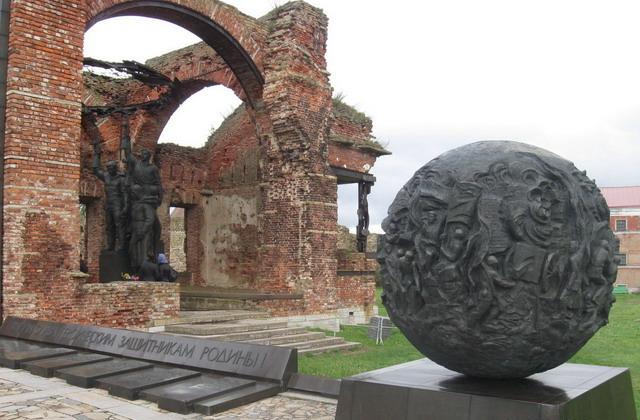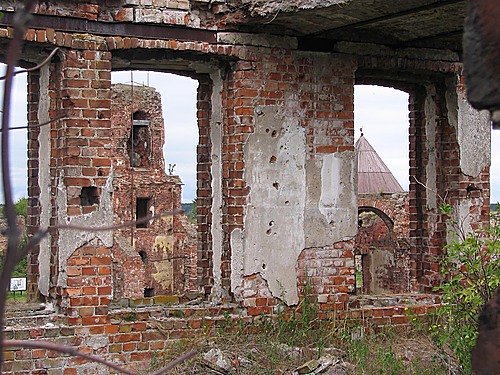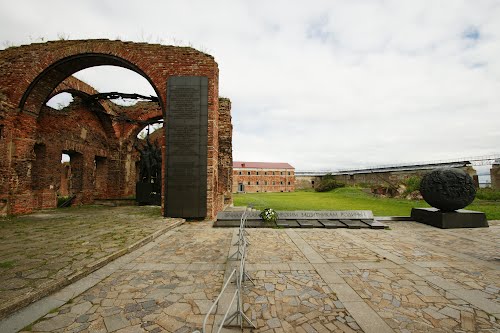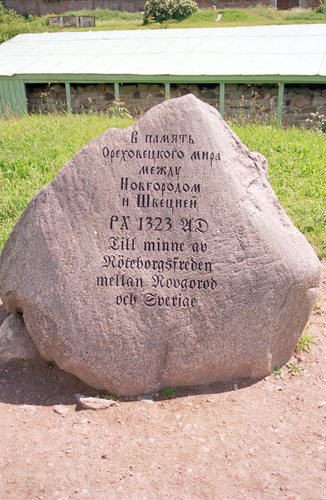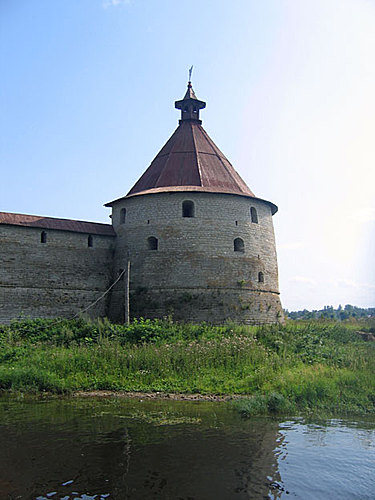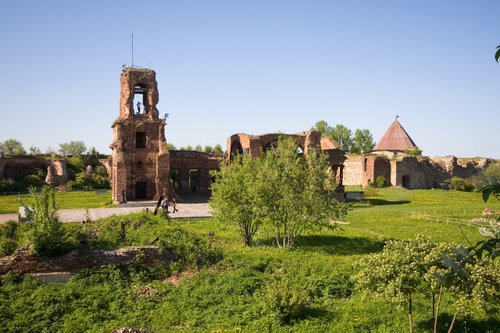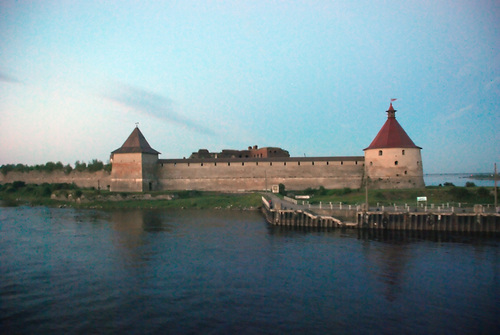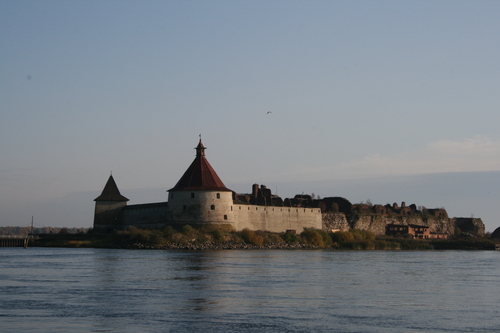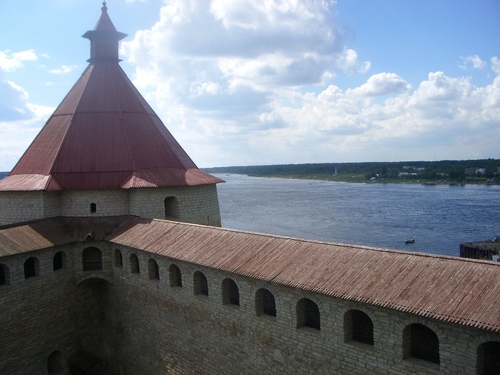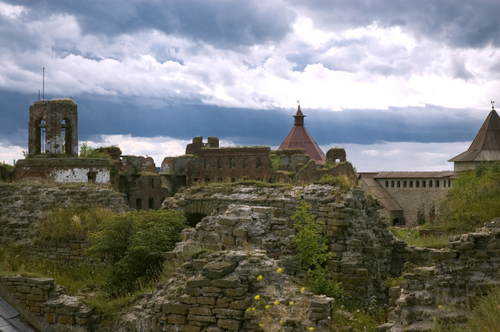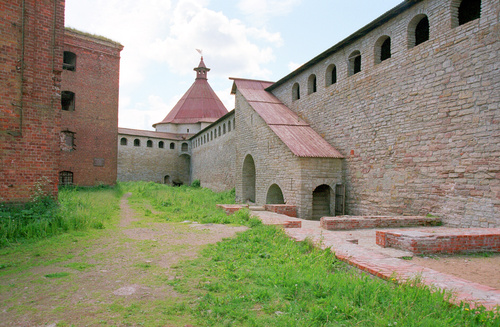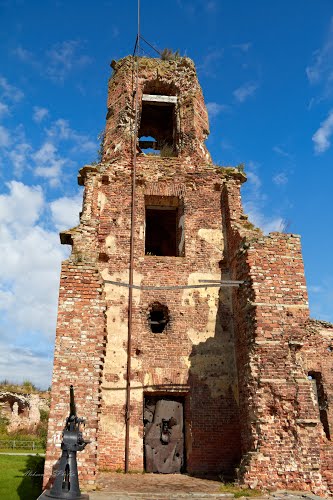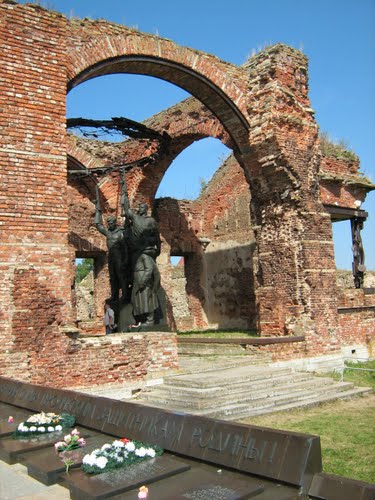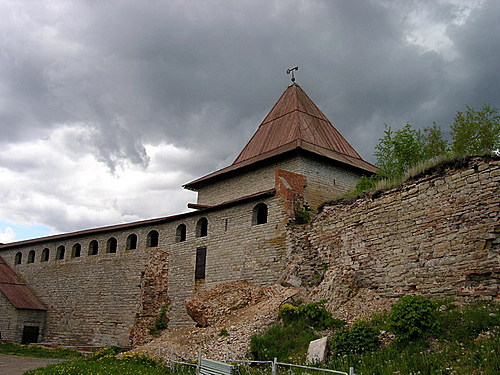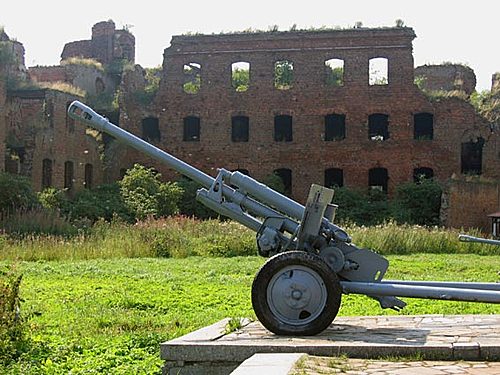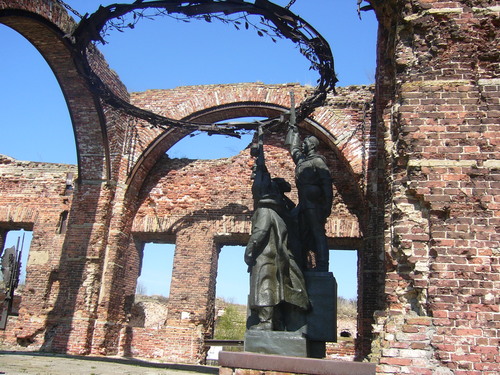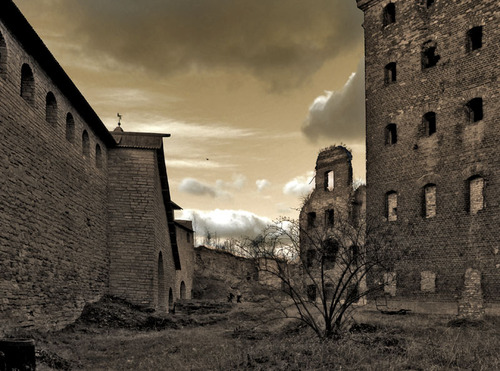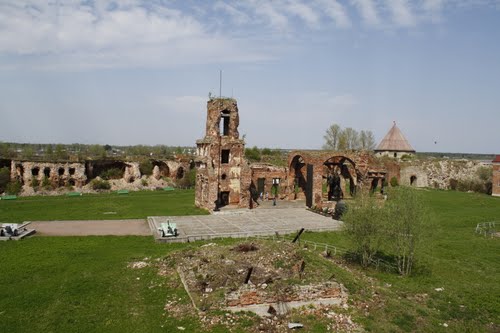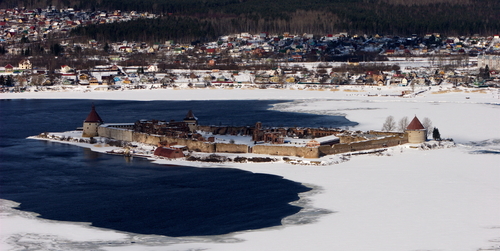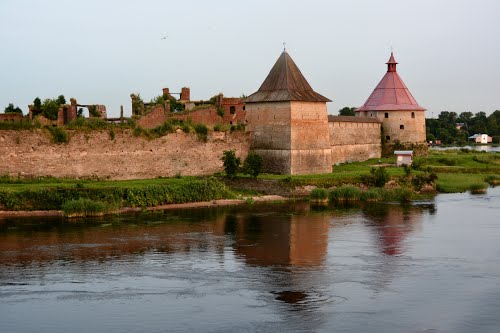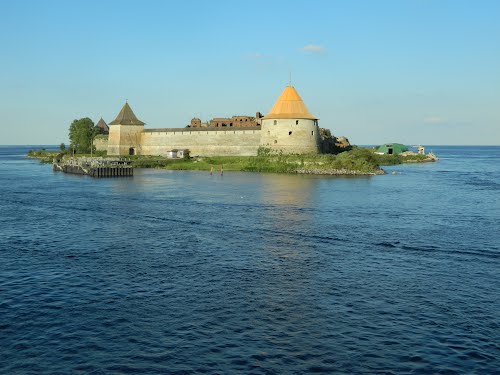A wooden fortress named Oreshek or Orekhov was built by Grand Prince Yury of Moscow on behalf of the Novgorod Republic in 1323. It guarded the northern approaches to Novgorod and access to the Baltic Sea. The fortress is situated on Orekhovets Island whose name refers to nuts in Swedish as well as in Finnish and Russian languages.
After a series of conflicts, a peace treaty was signed at Oreshek on August 12, 1323 between Sweden and Grand Prince Yury and the Novgorod Republic. This was the first agreement on the border between Eastern and Western Christianity running through present-day Finland. A modern stone monument to the north of the Church of St. John in the fortress commemorates the treaty.
Twenty-five years later, King Magnus Eriksson attacked and briefly took the fortress during his crusade in the region in 1348–1352. It was largely ruined by the time the Novgorodians retook the fortress in 1351. The fortress was rebuilt in stone in 1352 by Archbishop Vasily Kalika of Novgorod (1330–1352), who, according to the Novgorod First Chronicle, was sent by the Novgorodians after several Russian and Lithuanian princes ignored the city's pleas to help them rebuild and defend the fort. The remnants of the walls of 1352 were excavated in 1969 and can be seen just north of the Church of St. John in the center of the present fortress.
The fort was captured by Sweden in 1611 during the Ingrian War. As part of the Swedish Empire, the fortress was known as Noteborg in Swedish or Pahkinalinna in Finnish, and became the center of the north-Ingrian Noteborg county.
In 1702, during the Great Northern War, the fortress was taken by Russians under Peter the Great in an amphibious assault: 250 Swedish soldiers defended the fort for ten days before surrendering. Russian losses were 6,000 men against 110 Swedish losses. It was then given its current name, Shlisselburg, a corruption of Schlusselburg.
During Imperial times, the fortress was used as a notorious political prison; among its famous prisoners were Wilhelm Küchelbecker, Mikhail Bakunin and, for thirty-eight years, Walerian Łukasiński. Ivan VI was murdered in the fortress in 1764, and Lenin's brother, Aleksandr Ulyanov, was hanged there as well.
Out of original ten towers, the fortress retains only six (five Russian and one Swedish). The remains of a church inside the fortress were transformed into a memorial to the fortress's defenders. The fortress has been the site of an annual rock concert since 2003. There is also a museum of political prisoners of the Russian Empire and a small collection of World War II artillery.

